
Curator’s statement
Rarely can you find a country that has it all: insanely delicious food, rich history, efficient public transport, friendly locals — the list goes on — while being incredibly clean, safe and inexpensive. Enter: Japan. Whether you want to relax, party or explore what this beautiful country has to offer, Japan has something for everyone and has made its way into my top three destinations worldwide. Here is a fun itinerary for exploring parts of Japan in just 10 days.
The Fora Difference
Book with Alex to access exclusive perks and experiences on your trip.
Killer perks
Free upgrades, spa credits and more—we got you
Personalized recs
Customized travel planning for your style
Insider knowledge
Expert advice from people who’ve actually been there
Where to stay
Unlock perks by contacting Alex to book your trip.
Day 1: Arrival in Tokyo
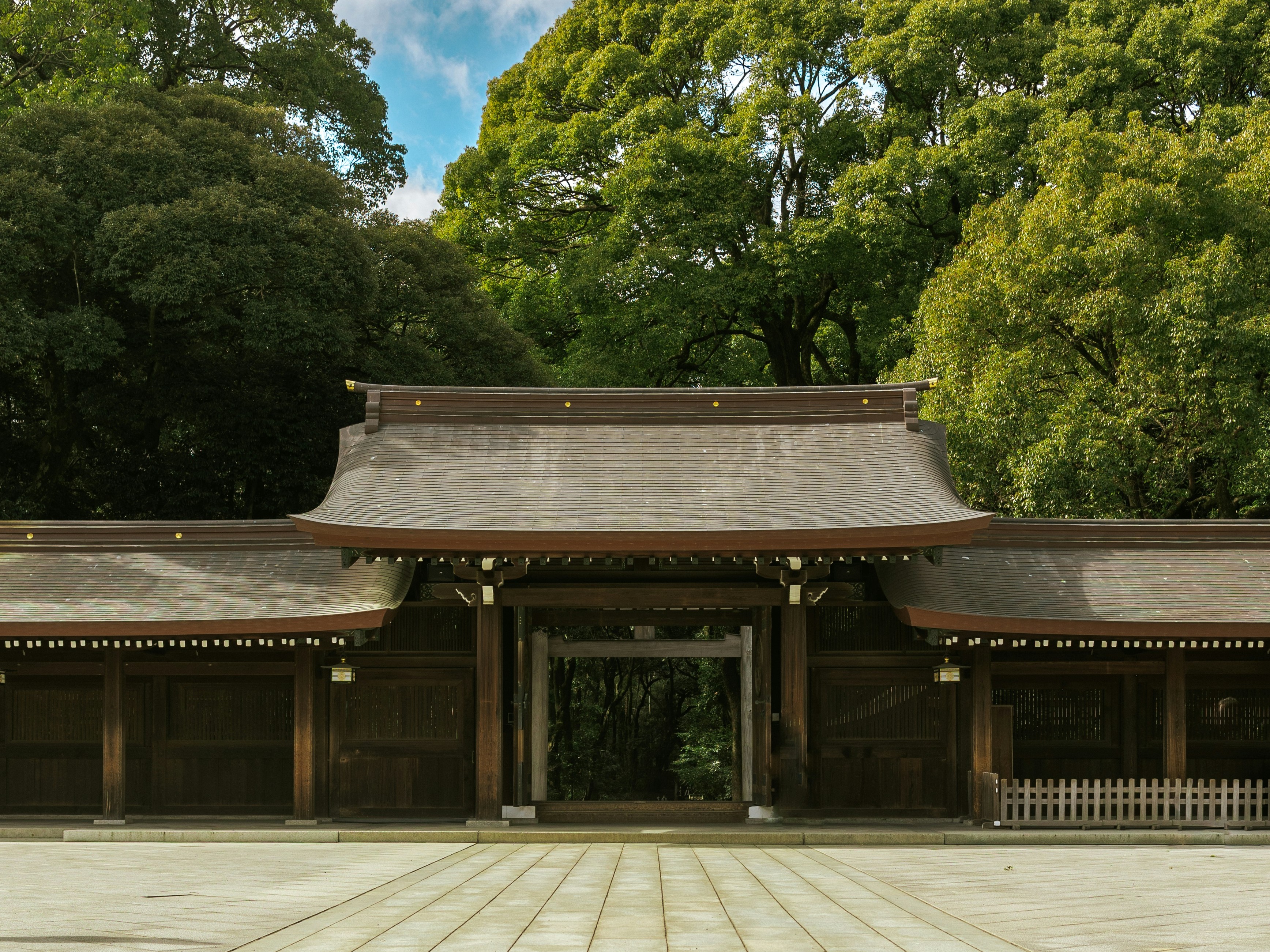
Tokyo is the capital of Japan and hosts two international airports. I recommend flying into Haneda (HND) when possible because it’s a quick 30 minutes to an hour from Tokyo while Narita (NRT), Tokyo's other airport, is around an hour and a half or more, depending on your mode of transport. Shibuya and Shinjuku are great options for areas to stay if you want to be in the center of the action and excitement of Tokyo, while Ginza is another very nice and centrally located neighborhood that has a lot of shopping and is known for being glamorous.
3D Latte Art
For an afternoon pick-me-up after your long flight, head to Cafe Reissue for 3D latte art if you’re staying near Shibuya (it closes at 7 pm). Here, the baristas make incredible latte art — you can even show them a photo of your pet and they can recreate it right in front of you.
Visit Meiji Jingu Shrine/Yoyogi Park
Stretch your legs after your long flight by taking a scenic walk through the grounds of Meiji Jingu Shrine and/or Yoyogi Park (next to each other). At Meiji Jingu, you’ll find a lush forest and walking path along with a beautiful shrine; at Yoyogi Park, you’ll find a beautiful park with cherry blossoms (if you're going around March/April) and tranquil ponds. Both are great places to find some peace and quiet in the middle of the bustling city. The shrine closes at sunset.
Explore Harajuku
Nothing says “Welcome to Japan” like bright colors and kawaii. Stroll through Takeshita Street to browse the storefronts and get a taste of Japanese youth culture and fashion. Make sure to check out the nearby Shibuya Scramble Crossing, the world's busiest crossing.
EAT
Grab dinner on your walk back to your hotel. You will find dozens of casual restaurants everywhere and, chances are, whatever you pick will blow your tastebuds away. Japan just knows what they’re doing when it comes to food and exploring random hole-in-the-wall restaurants is a huge highlight, so don’t stress too much about making your way to every single recommended eatery online.
Day 2: Sumo wrestlers, food stalls & capybaras
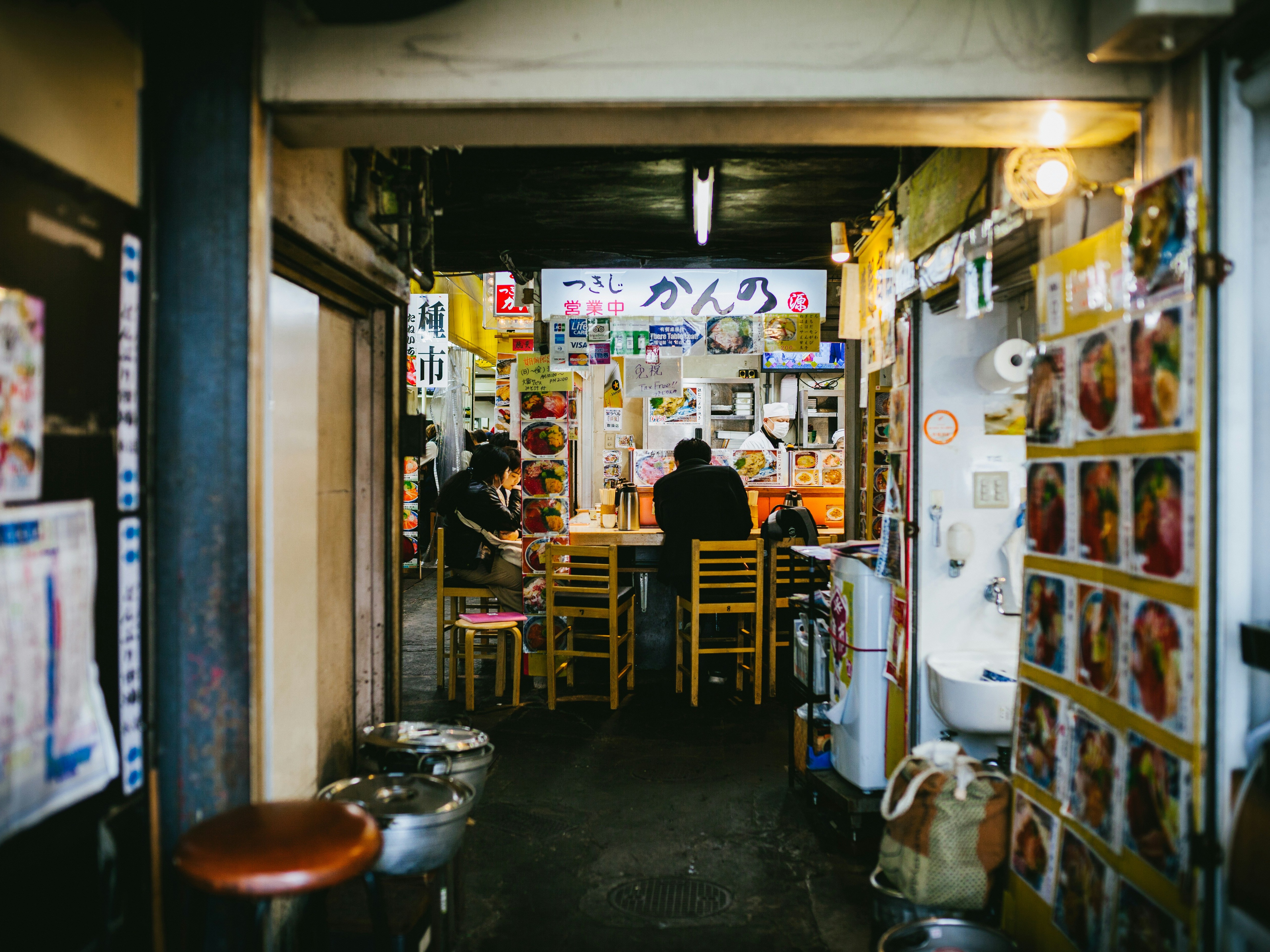
Try SO Many Different Foods at Tsukiji Market
Chances are, you’ll be up early because of jet lag. Use this to your advantage by getting an early start and make your way to Tsukiji Outer Market before the crowds overtake it. The market opens early — I’d recommend getting there around 6 or 7 am if you’re awake — and is full of small vendors selling everything from sashimi to oysters to mochi to wagyu. Most cafes aren’t open until at least 9 am, so this is a great alternative.
Watch Sumo Practice
There are six grand sumo tournaments a year in Japan, three of which take place in Tokyo. If you aren’t around for one of their main tournaments, you can still see the sumo wrestlers in action. There is the free option of watching outside their practice window at Arashio Beya (they practice from 7:30-9:30 but it depends on the day — be sure to check their schedule to make sure they will be practicing before you go). You can also take a sumo tour, which explains the history of sumo and allows you access to view their morning practice inside. Note: availability varies depending on dates.
Visit a Capybara Cafe
You may or may not have seen the iconic cafe that hosts its own small herd of capybaras, but Tokyo has just that. Cafe Capyba opens at 10 am on weekends and 11 am on weekdays. I suggest getting there before opening to put your name on their list so you’ll get to snuggle up with the huge — and lovable — rodents, feed them treats and enjoy a coffee at the same time. They don’t take online reservations, but they do fill up quite quickly.
Explore Asakusa
Make your way to the Asakusa neighborhood to eat lunch at one of the many restaurants or street vendors. While you’re here, you can also check out Sensoji Temple (Tokyo’s oldest temple), take a Sumida River cruise or head across the river up to the observation deck at Tokyo Skytree (Japan’s tallest tower) to get a better view of the city (you will need to purchase tickets!).
Visit Yushukan War Museum
Located within the Yasukuni Shrine, this museum explores what happened during World War II as told by the Japanese, along with other Japanese war history. This museum does have a history of being controversial, but if you’re a lover of war history, this may be one you want to visit.
Find Hidden Gems at Golden Gai
Explore Golden Gai, a charming collection of izakayas situated along six narrow alleys. The establishments here are very small, with only a few seats per bar, which is what makes this area so special. Enjoy small bites and drinks in this quaint little area or get ramen at Ramen Nagi, which is open 24 hours.
Day 3: Vintage shopping, a head spa & immersive art
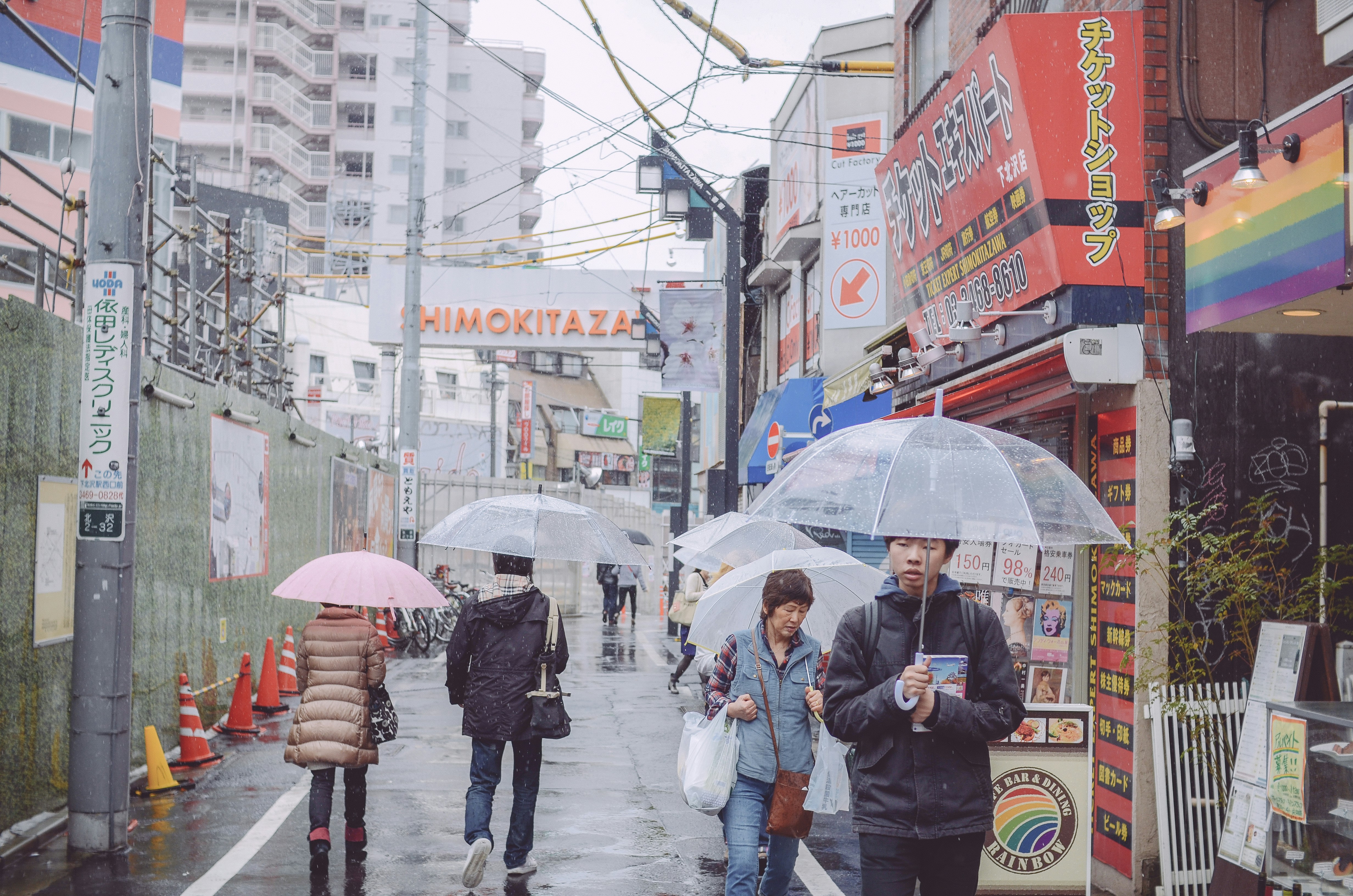
Shop Vintage in Shimokitazawa
Shimokitazawa is the neighborhood for you if you like vintage shopping and laid-back vibes. The streets are full of unique vintage shops, bookstores and small restaurants. For delicious and unique bagels (I know… bagels!?) check out Bagel 88 Cafe. It opens at 10 am and their seaweed and cheese bagel was surprisingly delicious.
Experience a Traditional Japanese Head Spa
I’ve always wanted to try a head spa and, boy, am I glad I did. While I saw a few throughout Japan, I chose Ritts in Shibuya and got the 85-minute Brain Spa. They offer several different packages, and while there is definitely a language barrier, the staff has flashcards so you can point to what you’d like in regards to pressure, scent, etc. They deeply wash your hair, give you a head, neck, and brief face massage, and there is the option to add on “scalp diagnosis” where they look at your scalp with a magnifying camera before and after. Let's just say my scalp has never been happier. Reservations are recommended.
Interact at TeamLab
What I thought would be a touristy nightmare turned out to be one of the coolest interactive art installations I’ve seen, designed to be a full-body experience (you walk through the exhibit barefoot). Currently, Tokyo hosts TeamLab Planets and TeamLab Borderless. Tickets need to be purchased a few weeks in advance but — although touristy and yes, a little crowded — I think this is totally worth it. Check out the nearby Toyosu Shijou Market for some fuel if you choose to go to TeamLab Planets.
Grab a Cocktail in Shibuya
Japan is home to a plethora of AMAZING cocktail bars. Two of my favorites in Tokyo are The Bellwood (their matcha guava drink was exactly what the doctor ordered), and SG Club in Shibuya (three stories with three unique vibes). Reservations are recommended for both of these bars but not required.
Day 4: Ghibli, omakase & karaoke
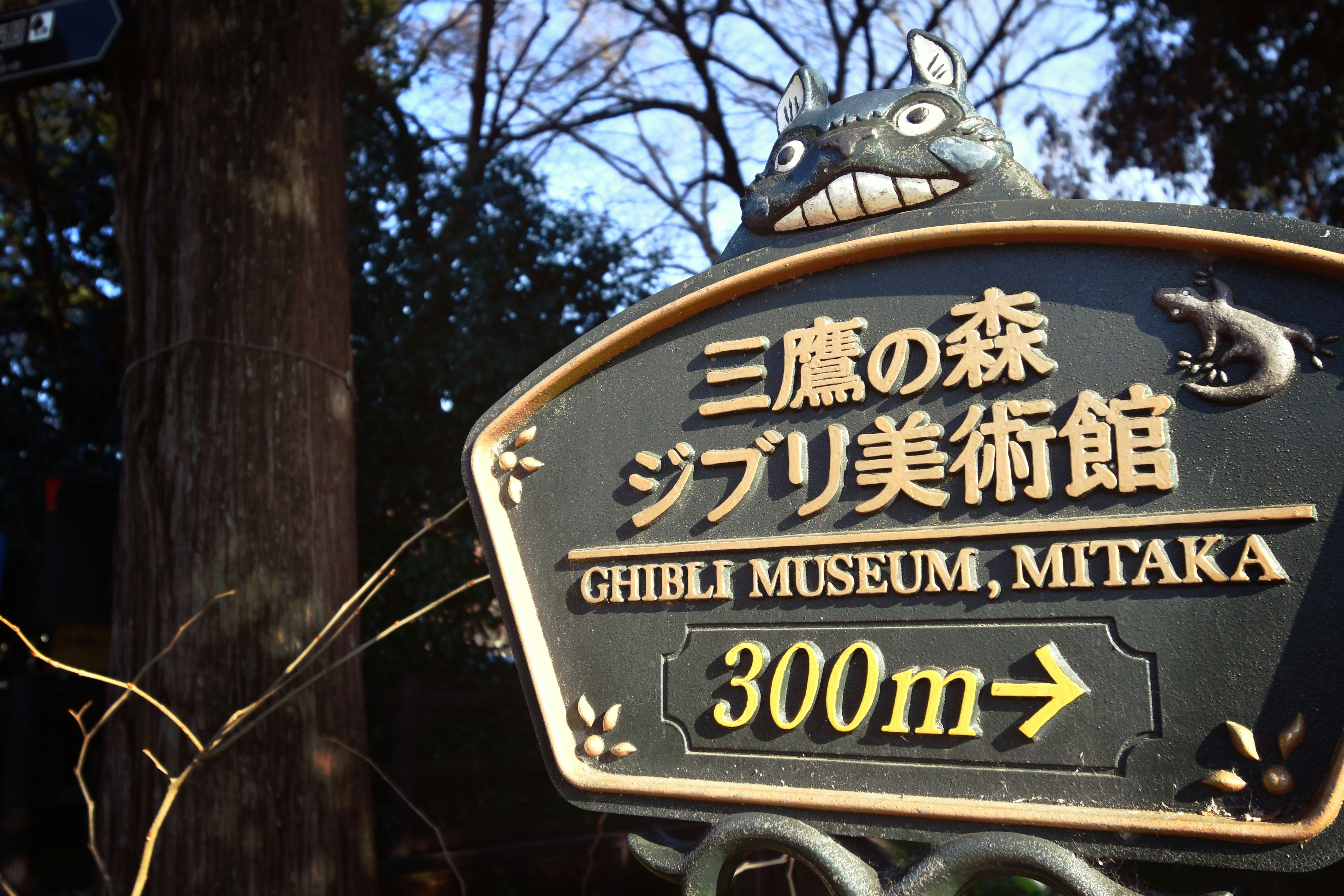
Walk Through Shinjuku Goyen
Opening at 9 am, Shinjuku Goyen is an expansive and gorgeous park in the Shinjuku/Shibuya area. It’s also home to cherry blossoms and an iconic multi-floored greenhouse (open at 9:30) that is packed with lush plants, ponds and a waterfall. It costs 500 yen to enter and the park is closed on Mondays, but I highly recommend taking a morning walk through this magical place if you can.
Go to Ghibli Museum
For those who love anime, Ghibli Museum is a must. The museum is about 40 minutes outside of the city and showcases the work of the Japanese animation company Studio Ghibli. At this multi-story mansion museum, you’ll find oversized statues, colorful fun architecture and lots of interesting information about the making of their films. I recommend purchasing tickets in advance.
Experience Omakase
While a little bit more polished and expensive than most of the food you’ll probably be eating in Japan, enjoying an omakase is absolutely worth it and is an art form in itself. Omakase is a traditional and unique way to enjoy sushi selected by the chef and one good place (of many) to try this is Mantensushi Nihonbashi. Reservations should be booked ahead of time.
Karaoke
I never thought I would recommend doing karaoke to my clients but alas, the Japanese karaoke scene is just too niche and fun not to touch on. There are tons of great options throughout Japan, but if you’re looking for an extra special experience, check out Karaoke Kan in Shibuya where the karaoke scene in Lost in Translation was filmed (in room 601!). Every group gets their own room, so whether you’re going with a group of two or 10, it’ll feel like a party. The rooms are clean and you typically order drinks to your room via an iPad.
Day 5: Onsens in Hakone
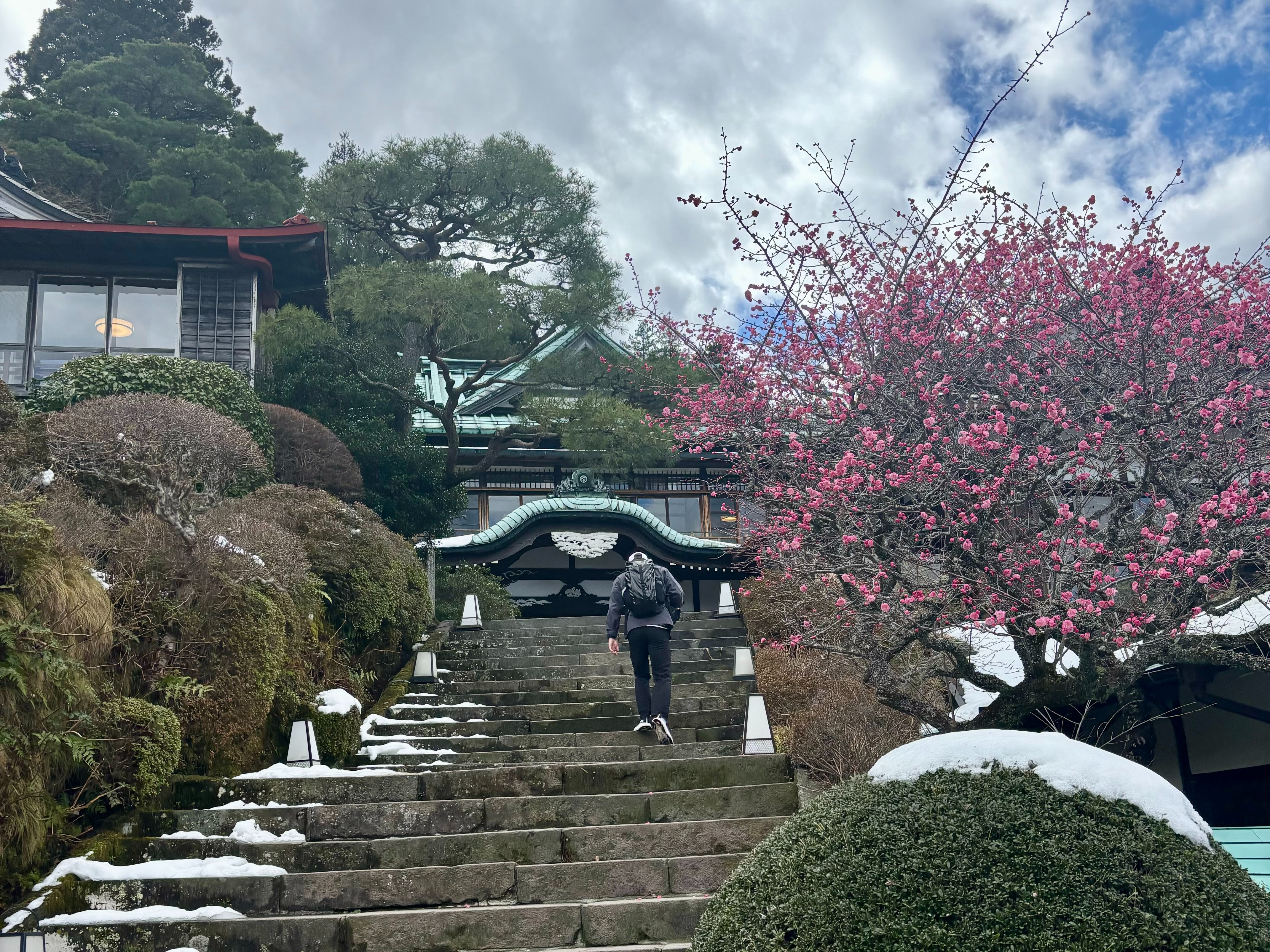
Go to Hakone
Take the Romancecar from Shinjuku station to Hakone, where you can experience tranquil and traditional Japanese culture by staying in a ryokan and experiencing traditional onsens. Hakone is home to tons of onsens (hot springs) and this town showcases that in such a lovely way. Ranging from eateries that offer onsen foot baths while indulging in their food to side-of-the-road onsens you can dip your hands or feet into, this town offers an incredibly unique experience for those wanting to relax.
Adventure in Hakone
If you’re looking for some adventurous time in nature, try out Hakone Forest Adventure, a ropes course and climbing experience in the trees.
Bathe in Bizarre Onsens
If you want to experience some of the craziest onsens in the world, you can go to Yunnesun. They have a variety of onsens, ranging from a sake bath to a wine bath to a coffee bath to a waterslide and more. There are a lot of kids here, so if you’re looking for something less crowded, it may not be your jam. It is a fun experience, though, and they do have an adults-only side, but keep in mind the adults-only side is separated by gender and guests must go nude.
Visit the Hakone Open-Air Museum
This incredible sculpture garden and museum is home to dozens of interesting sculptures as well as a large Picasso exhibit. It’s set amongst nature and the park offers stunning views of Hakone. The museum is open from 9-5 everyday.
Stay at a Ryokan
Japanese ryokans are traditional Japanese inns where people go to relax and recharge. Think tatami mat flooring, onsens, yukata robes and slippers to wear throughout your stay (even at meals and in common spaces), and traditional kaiseki cuisine (typically a chef-selected multi-course breakfast and dinner). You can find ryokans at all different price points and with different offerings, some with views of Mt. Fuji. I stayed at Mikawaya Ryokan and thoroughly enjoyed my stay (and my private onsen bath off my balcony!) and will recommend this experience to anybody traveling to Japan.
Day 6: Travel to Kyoto
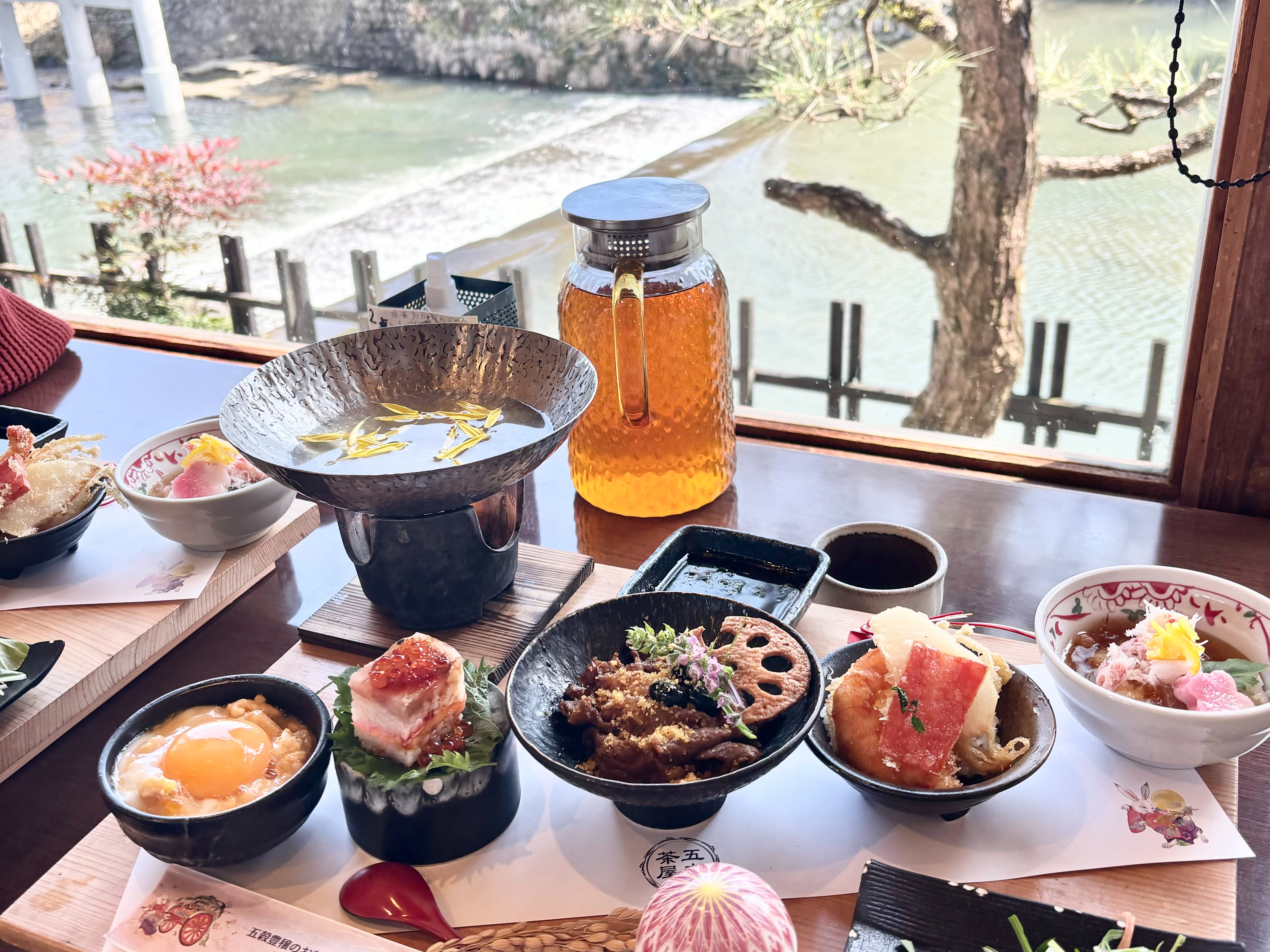
Head to Kyoto
Take the train from Hakone to Kyoto to experience all that the historic capital of Japan has to offer. Tip: try to get a seat on the right side of the train for views of Mt. Fuji. I’d recommend staying in the Higashiyama ward of Kyoto, specifically Gion or near the river. Here, you’ll be surrounded by amazing bars, restaurants, old buildings and shopping, all while being close to public transit so you can explore more.
Get lunch & Shop at Nishiki Market
Somewhat similar to Tokyo's Tsukiji Market, Kyoto’s Nishiki Market is covered and has plenty of other shops to choose from that sell more than food. Here, you can find knife stores, tea shops and so much more alongside the delicious food stalls.
Explore Arashiyama
Head to Aryshiama ward to find cute shops, sweet treats and a quaint river (with canoe rental options). This is the area where the famous bamboo forest is located. Note: If you want to avoid crowds, you’ll have to go first thing in the morning. Arashiyama Itsukichaya is a wonderful place for a traditional kaiseki dinner. You’ll have to make reservations in advance, and I’d suggest getting a reservation on the riverside for beautiful views.
Get a Cocktail in Gion
Along the river lie plenty of amazing bars. Two standouts that we found were Bee’s Knees, a wonderful moody spot with rotating featured bartenders, and Bar Ixey, another absolutely incredible find — the owner and bartender is so friendly and creates bespoke cocktails based on your preferences.
Day 7: Temples, matcha & local beer
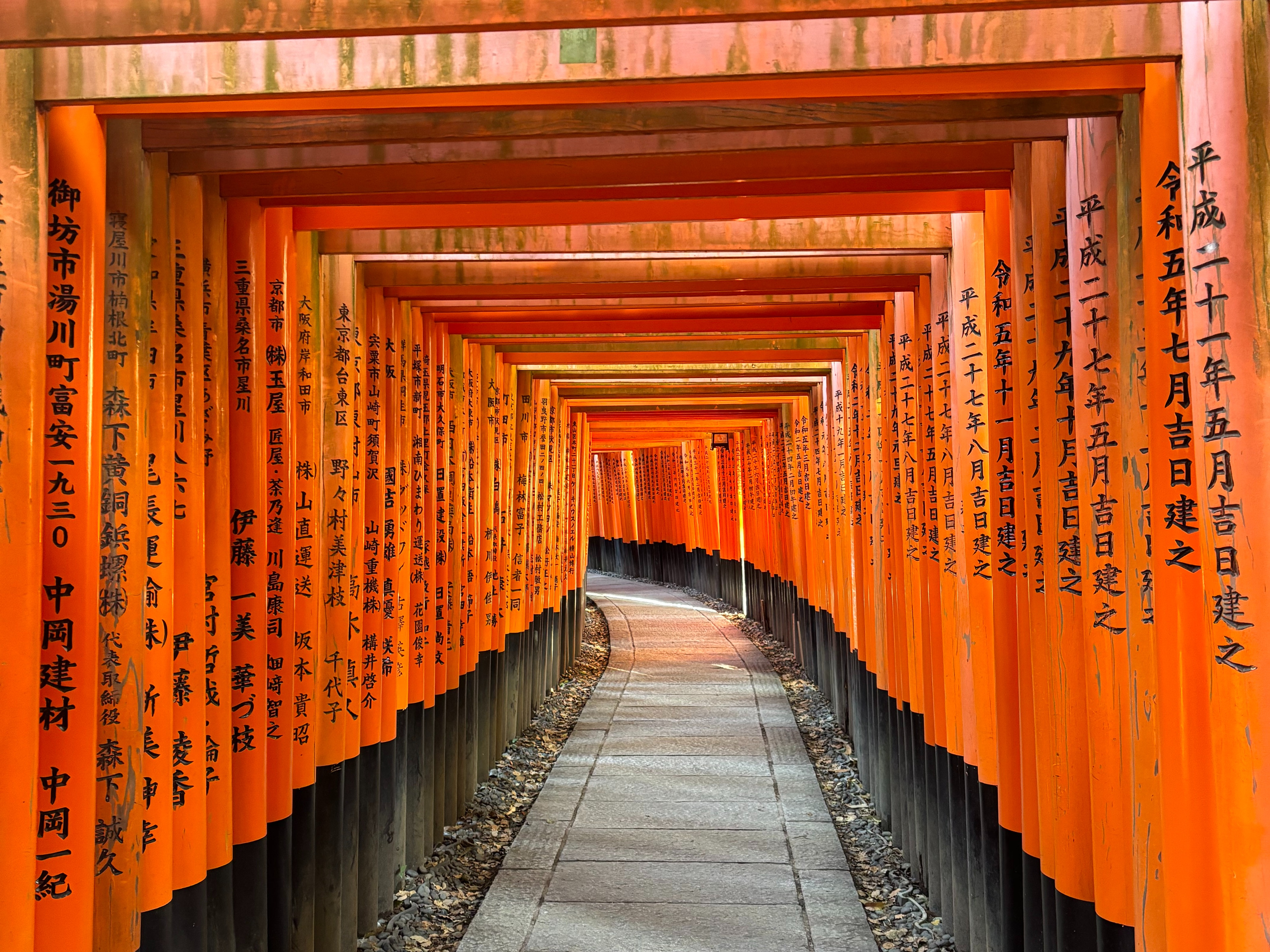
Hike Inari Fushimi Shrine
If you’re up for the 2.8-mile hike — it takes around an hour and a half — to Inari Fushimi Shrine, do it. It’s the famous shrine with 1,000 red torii gates surrounding the path up to the shrine. At the top, you’ll find beautiful views of the city. Get here early if you want to avoid the crowds.
Visit Uji and Make Matcha
If you’re a matcha lover, you can venture about 45 minutes to an hour south to find Uji, the matcha capital of the world. This is a small town consisting of a few small shops with a big emphasis on matcha. You can even book a matcha-making workshop at Fukujuen Tea Factory, which is around 45 minutes long. Here, you’ll learn how matcha is made and make your own matcha powder with a stone mortar. A great place to pick up some high quality matcha to bring home!
Check Out the Views at Kiyomizu-dera
Kiyomizu-dera is a historic Buddhist temple renowned for its wooden terrace that offers panoramic views of the city and surrounding mountains. Established in 778, the temple's main hall, built without the use of nails, stands on wooden pillars perched on a hillside. Kiyomizu-dera is also famous for its "Otowa-no-taki" waterfall, where visitors can drink sacred water believed to confer health, longevity and success. You can either get a paid ticket to enter or just make your way up to the gates outside of the paid section to see some amazing views. It’s particularly beautiful in fall, but this is also when you’ll see big crowds.
Grab a Beer at a Local Beer Bar
Umineko is located in the Gion district and offers an extensive list of Japanese craft beers. They have a mostly standing bar but also a small lounge section. If you’re a lover of craft beer, give this spot a try.
Day 8: Nara day trip & arrive in Osaka
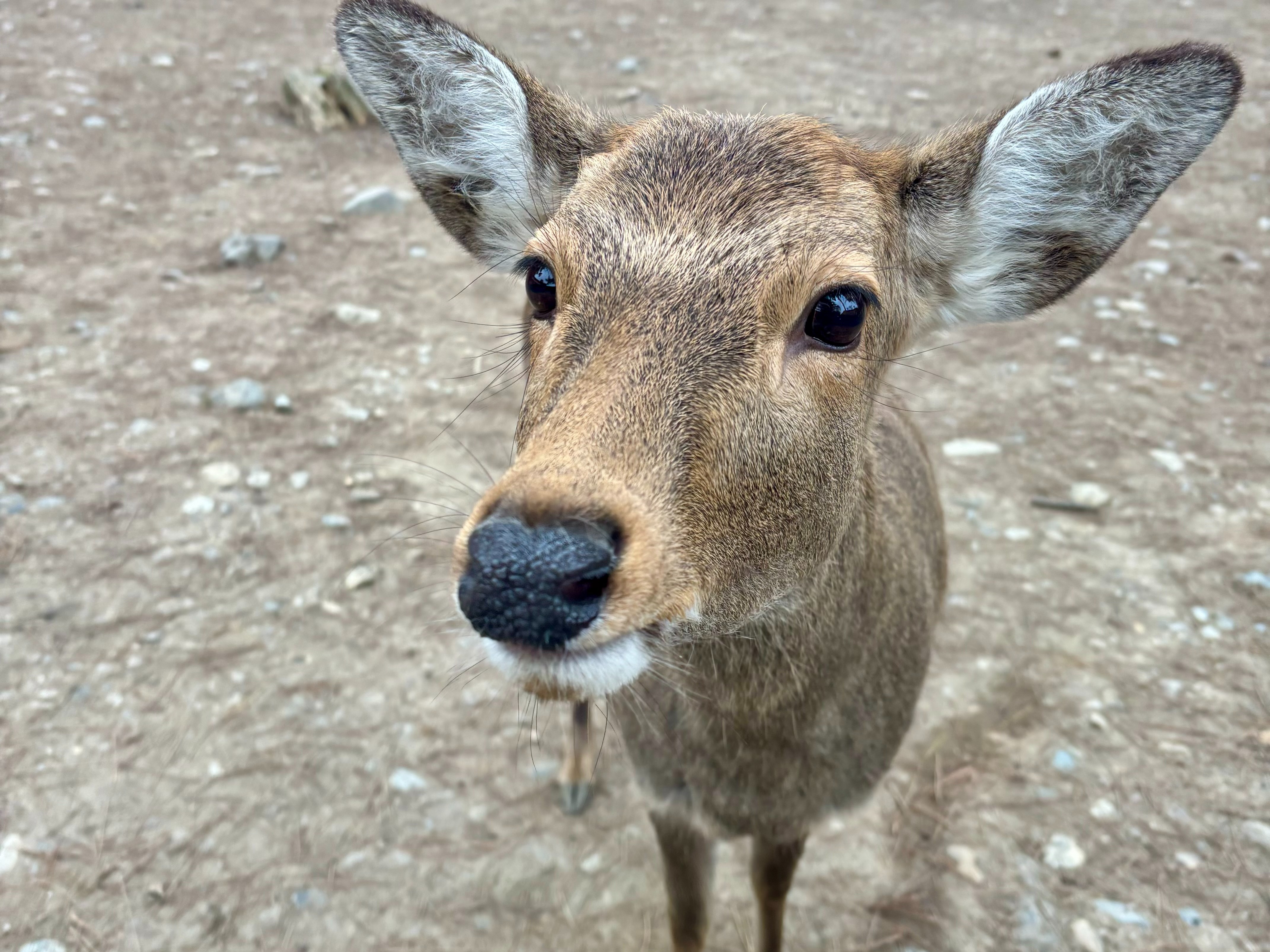
Day Trip to Nara
Nara is home to over 1,000 deer that are thought to be messengers of the gods. The deer quite literally roam the street here and, for 200 yen, you can buy biscuits on the sidewalk to feed them. They are very comfortable around people, almost too comfortable, so hold your biscuits close! While you’re here, you can walk to Nakatanidou to see men performing high-speed and dramatic mochi pounding through the window. Be sure to buy one — they are so good and interestingly warm! Lastly, in Nara, you can visit several parks and gardens as well as Todjai Temple, where you’ll find a huge gold Buddha statue before you make your way back onto the train and to Osaka.
Arrive in Osaka
Osaka is known for its rich and vibrant food culture. I recommend staying in Namba so you’re close to shopping and attractions in Osaka.
Dotonbori
Experience the craziness for yourself. Dotonbori is packed with everything you can imagine, from shopping to all different kinds of foods. Try Osaka's street food specialties here — okonomiyaki and takayaki.
River Cruise
Hop on a boat to explore the Tombori river from a different perspective. The guides don’t all speak English, so sit up front so you can read their signs that act as subtitles. The cruises are only around 20 minutes long so they are a fun add-on while you’re at Dotonbori — you can buy tickets at the kiosk on the north side of the river.
Day 9: Osaka Castle, Umeda Sky Building & a youth culture hotspot
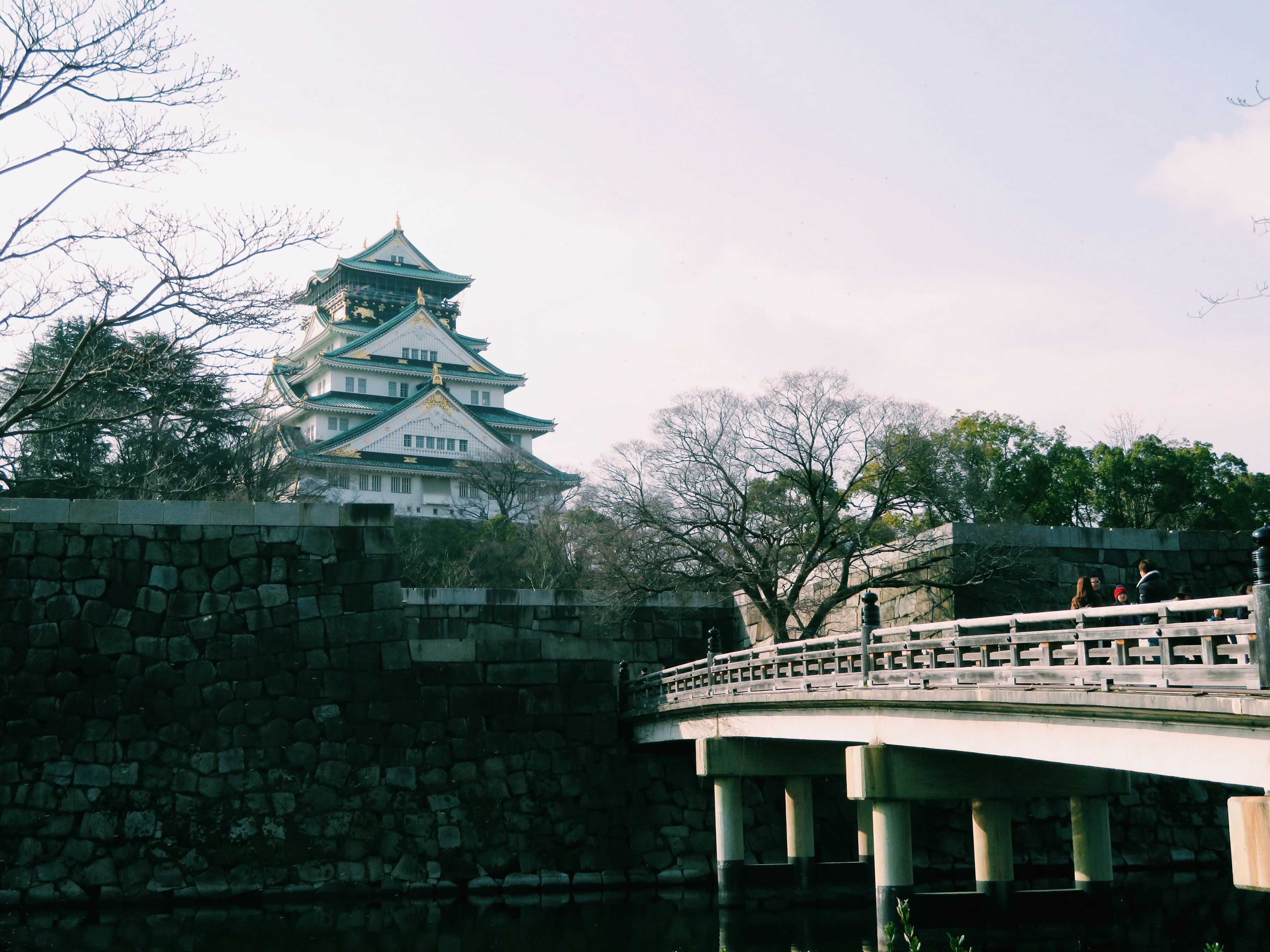
Osaka Castle Park
Take a morning walk around Osaka Castle. There are a couple different loops you can do depending on how far you want to walk, but here you’ll find beautiful views of the castle and a scenic walking (or running) route. It’s open 24/7, so you can go as early as you please. Osaka Castle itself, which is home to its very own museum, opens at 9 am, but if you aren’t a big fan of history, seeing it from the outside is probably enough.
Hang in Amerikamura
Amerikamura is a small neighborhood within Namba that’s a well-known center for Japanese youth culture. There are plenty of cafes, bars and shopping. Again, if you like vintage clothing, you’ll find a good amount in this neighborhood.
Revel in the Views at The Umeda Sky Building
The Umeda Sky Building is a prominent landmark in Osaka, featuring a unique design with two towers connected by the "Floating Garden Observatory." Offering panoramic views of the city, this observation deck, situated over 567 feet above ground, provides visitors with breathtaking vistas of Osaka and its surrounding areas.
Enjoy Bespoke Cocktails at Bar Nayuta
Quite possibly the best cocktail bar of the trip (but they were all incredibly good), my husband claimed to have experienced the best old fashioned he’s ever had here. Again, the bartenders make drinks based on your preferences and they just. don’t. miss. It is very much speakeasy-style and very hard to find from the street. It’s located on the fifth floor of a corner building. Look for the star to the right of the entrance when you’re looking from the street.
Day 10: Breakfast ramen & fly home
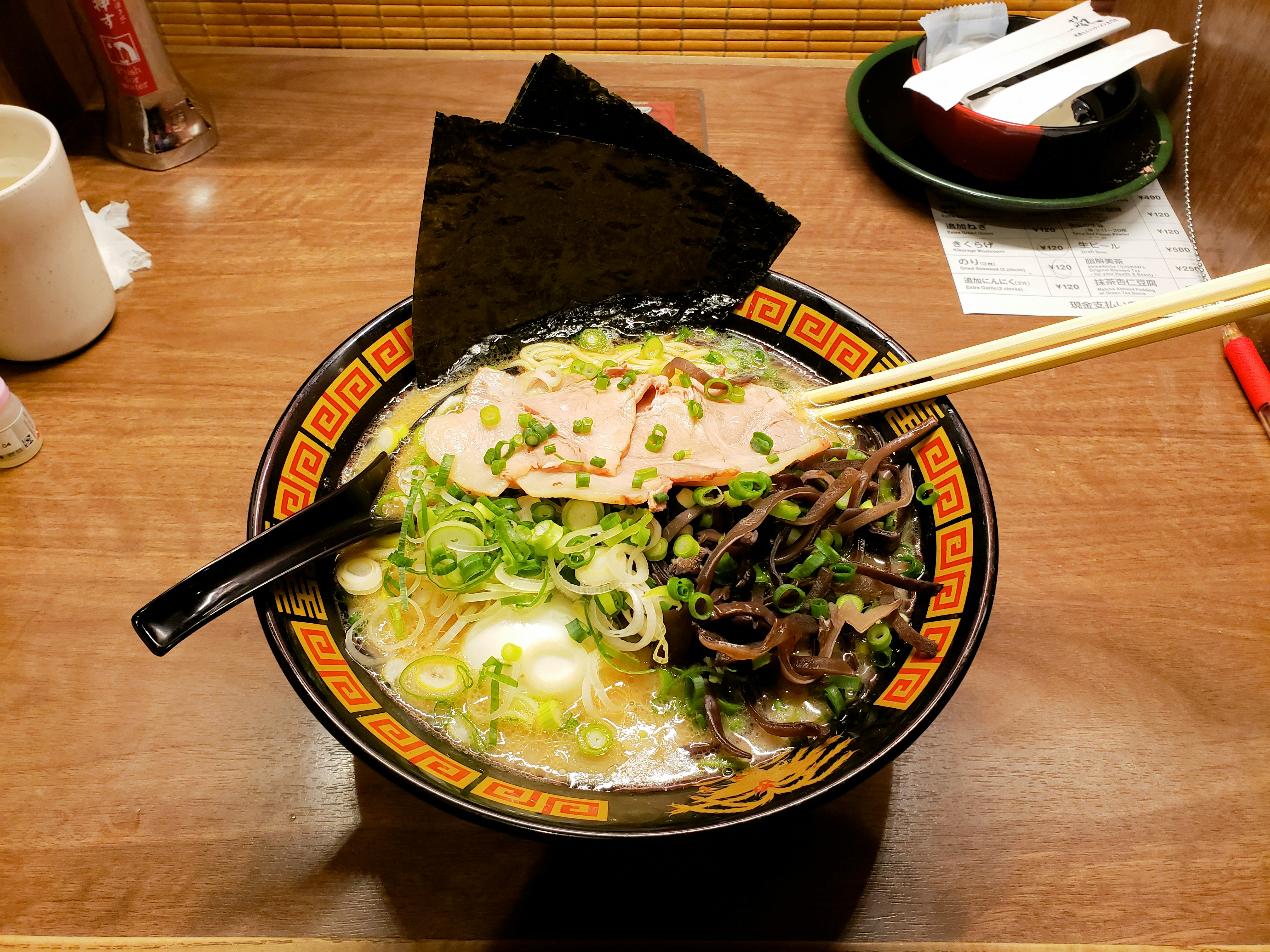
Have Ramen for Breakfast
Spend your last breakfast in Japan enjoying my favorite ramen from Ichiran. Yes, this is a chain restaurant, but they have everything dialed and I consider eating here an experience within itself. You’ll see what I mean. Some of their locations, including the one in Dotonbori, are open 24 hours a day, which makes it the perfect place for a pre-flight meal — and going in the morning means avoiding long lines.
Fly Home
For convenience, you can fly back to the US from Osaka’s airport (KIX). Another option is to take the shinkansen (bullet train) to Tokyo and fly out of HND or NRT, which just takes a few hours.
Need to know
There are so many things to do in Japan that don’t fit into a 10-day itinerary. Tea ceremonies, animal cafes, food tours, ring-making classes, concerts, glass blowing, coffee tasting, soccer and baseball games (seasonal), geisha experiences, Disney and Universal Studios, quirky museums (ramen museum, parasite museum, anything you can think of), Kabuki performances — the list goes on. Reach out to me and I’ll help you pin down your own perfect itinerary!

Travel Advisor
Alex Sallis

Get in touch with Alex
Did you like this guide? Reach out to customize and book your own experience. Or, just to chat about travel in general.
You can expect a response from Alex within 1–2 business days. You’ll also be subscribed to our traveler newsletter (you can unsubscribe at any time).
Looking for more travel inspiration? Check out my guide, The Ultimate Adventurers Guide to Cape Town.
This guide is part of our ongoing series on travel to Japan.